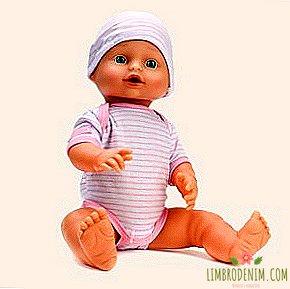The history of sex toys: How did the vibrator
Sex toys have long ceased to be considered something "strange" and "shameful" - today is a familiar part of life. But to their modern look, they have come a long way - they exist not for the first millennium. We understand how sex toys appeared and what important milestones were in their history.

alexander savina
From Greece to Japan

If you believe the excavation, sex toys existed about always: on account of archaeologists many phalluses discovered, created in different periods - the oldest appeared around 28 thousand years BC. Of course, not all scientists are sure that they were used just like a dildo: some believe that, for example, it could also be hammers, tools for straightening arrows and spears or ritual objects. Others advise you not to discard this version - in the end, it was not necessary to use a stone penis to carve something out of stone or trim the arrowhead. "Judging by the size, shape, and in some cases, and the obvious symbolism of these rods from the Ice Age, it seems strange to avoid the most obvious and simple interpretation. But it was avoided," said archaeologist Timothy Taylor.
Penis and penis-like objects are often found in ancient art - for example, among the Egyptians (although, of course, their very appearance in the picture still says nothing about the purpose of the object). Scientists quite confidently say that dildo prototypes existed in ancient Greece - most often they were made of softened leather, which was polished for smoothness and stuffed with wool; Olive oil was used as a lubricant. However, how often they were used just for masturbation is not known for sure - there are, for example, images where women simply carry a dildo in a basket for the holidays. In the comedy of Aristophanes "Lysistrata" women deny sex to men, until they stop meaningless war - there are mentioned dildo as a substitute for men.
According to the legend, Cleopatra could have the first prototype of the vibrator, who allegedly filled the hollow bottle from under the pumpkin with bees - but there is no confirmation of this beautiful (and obviously dangerous) story. Dildos met in China and India; at the same time, you should not link them exclusively with masturbation - for example, the Romans used them for ritual ceremonies of "defloration".
In the Middle Ages, prototypes of sex toys spread throughout Europe and Asia. Although widespread does not mean that they were treated calmly: for example, researcher Halley Lieberman in the book "Buzz: A Stimulating History of the Sex Toy" about the history of sex toys mentions situations where whole parties that were brought from Italy to England, confiscated at customs. On the other hand, to say that this was the case everywhere, is also not worth it - the same Halley Lieberman notes that in Japan of the Edo period, the dildo was treated positively. One of the most famous sex toys for women of that time was two silver or copper balls that had to be inserted into the vagina; as they moved, they began to move and vibrate inside.

Mechanics
The first mechanical sex toys appeared much later. One of the most popular versions was put forward by scientist Rachel Maynes, who wrote the book "The Technology of Orgasm: Hysteria, the Vibrator, and Women's Sexual Satisfaction" ("Technology of Orgasm: Hysteria, Vibrator, and Sexual Satisfaction of Women"). She says that vibrators appeared in the second half of the nineteenth century. For a long time, ideas about women's health were built around the concept of "hysteria" or "uterine rabies" - it was customary to write off any strange ailments to them (do you need to say that the American Psychiatric Association abandoned this concept only in 1952). For the treatment of these "ailments", says Manes, the doctors recommended "pelvic floor massage", which was supposed to end with "hysterical convulsions" (in other words, an orgasm) and improve the woman's well-being.
The idea that in the Victorian era there could be devices that helped a woman achieve an orgasm seems strange to many - not surprising, considering how repressed female sexuality was. But Maynes says that it is important to take into account the context of the epoch and how long ideas about sexuality were inextricably linked with penetration - in her opinion, doctors did not consider vulvar massage a sexual practice and calmly made it to patients. The first vibrators, according to her, appeared as a replacement for "manual labor" - a quick way to massage the client allowed to take more patients and, therefore, earn more.
For nearly twenty years, the book by Rachel Maynes has remained one of the main sources of knowledge about the history of mechanical sex toys, but today more and more researchers express their claims. Last year, researchers at the Georgia Institute of Technology published an article criticizing her. According to them, Manes interprets the sources very freely: in the literature to which she refers, no direct massage of the clitoris and anything that can be interpreted as a description of an orgasm are mentioned directly. According to the researchers, there is some evidence that doctors practiced massage of the genitals, but it cannot be said that this was a routine and widespread procedure. So while the idea of treating "hysteria" with a vibrator remains a myth, even if it is a favorite pop culture.

Nevertheless, researchers do not deny that massagers could be used as sex toys. The first such devices appeared at the end of the nineteenth century in different countries: France, England, Germany, China, Japan, and the USA. It was a variety of designs - huge, heavy and not the most convenient: some worked on a pair, others had to be controlled manually by rotating a special pen. Of course, there is no direct evidence that they were used for masturbation in advertising - one can only guess about it on indirect grounds. “Comparing these advertisements with other advertisements of the early twentieth century, we can conclude that [sex toy advertisements] are much sexier,” says Halley Lieberman. “If you look at other advertisements in newspapers, women do not have such deep cuts. The vendors obviously put sexual undertones into them. They understood that they had designed phallus-like objects that could be inserted into the vagina. I think they suspected that such a thing was possible. "
Since the eighties of the nineteenth century, massagers have been widely advertised for use at home, including by men. Often, the devices were advertised as devices for beauty - they were supposed to smooth out wrinkles and skin irregularities, and at the same time "soothe the nervous system." It was assumed that medical devices help in the treatment of various diseases and conditions, from colds to headaches and stomach problems. True, the inventor of one of them, Dr. Gerald Makar, was sentenced to three years in prison in 1914: his device, which was supposed to "promote better blood circulation," was declared useless.
A wide advertising of vibrator massage therapists continued until the twenties. Then they began to appear in pornographic films and became associated not only with a direct and “harmless” appointment, which naturally led to some informational difficulties. Years later, in 1958, the American Food and Drug Administration (FDA) also came out against mechanical massaging vibrators - in principle, it did not require a device to be banned, but the idea was to talk about their miracle properties and that they are able to cure from every conceivable disease, forbidden.
At the same time, of course, not all sex toys remained mechanical - the dildo continued to exist completely, simply, unlike massagers, remained "in the shadow", as they could not be sold in the open.

Release
In the sixties, sex toys gradually began to become a more mainstream phenomenon. For example, in the middle of the decade, the American ventriloquist Ted Marchais (this is a pseudonym) made strap-ons more accessible. Of course, the devices themselves existed before that (for example, in India or in the same America at the beginning of the century), but in the USA of that time they existed semi-legally: the law on "obscene behavior" prohibited to send sex goods by mail, and the only legal way sales were positioning them as medical devices that should help heterosexual couples in sex. Marchais tried to bring them "out of the underground": he advertised them as medical devices, as was customary, but distributed them not only through doctors, but also through wholesalers.
According to Halley Lieberman, one of the reasons for the popularity of strap-ons was that they did not threaten traditional ideas about sex and sexuality: they were not considered as a substitute, but as a “complement” to a man, for example in situations when he could not give a woman pleasure himself - help marriage. " Thus, sex toys, with all their "indecent" image, did not really break the foundations, but acted within the framework of a completely traditional patriarchal model - that of proposing something fundamentally new to the woman, there was no talk yet.
Finally, in the late sixties - early seventies, a device appeared that drastically changed the situation with sex toys - the cult Hitachi Magic Wand (now it is simply called Magic Wand). The device was always positioned solely as a massager (given the history of sex toys, frankly, not a new move), but customers used it for clitoral stimulation. Even if you have never watched "Sex and the City", you probably know the famous scene where Samantha Jones angrily says: "Do you think I will believe that women buy it to help the aching neck?"
The famous sex enlightener Betty Dodson, who wrote the masturbation book “Sex for One” and conducted relevant master classes for women, helped the device to gain fame. It was on the last she used the Magic Wand: according to her, having tried several sex toys, she decided that this one was the best. In addition, the Magic Wand did not look anatomically like other sex toys.

Another important episode in the history of sex toys is connected with Betty Dodson's courses: one of their visitors, Dell Williams, who at the time was working in the field of advertising, decided to buy Magic Wand on the advice of Dodson. Horrified by the reaction of the seller, who began to hint at why she needed a device, Williams opened Eve's Garden - the first major feminist sex shop for women. She wanted to create a comfortable space where clients could safely buy sex toys without being ashamed of their sexuality and their choice. The store has been around for almost half a century, since 1974.
Another important point in the history of sex toys is associated with the name of Gosnell Duncan, an American from Grenada who was paralyzed from the waist down because of a work accident. Duncan wanted to change his sex life with his wife - and, in principle, he was interested in many topics about the sexuality of people with disabilities. Despite the continued ban on the shipment of "obscene" goods, he took up the development of a new, improved dildo - and as a result came up with making them from silicone (this material was easier to clean; to create a comfortable and safe option to use, he communicated with General Electric, selecting the appropriate formula), with special fixings that helped conveniently use them to people with disabilities. By virtue of Spanish origin, he made dildos of different shades, and not just the “flesh” color (imitating the organ of a “white” person). On the advice of Dell Williams, owner of Eve's Garden, he began to produce abstract dildos, unlike penises and unnatural flowers. Now this step seems to be absolutely familiar to us (a huge number of sex toys look abstract), but then it was a real feminist breakthrough - it seems for the first time in a long time manufacturers thought that women expect from sex toys something more than just a continuation of a member.
In 1983, another famous device appeared - Rabbit Pearl, with a part that needs to be immersed in the vagina, and a “sprout” to stimulate the clitoris. Its unobvious appearance is simply explained: a vibrator was produced in Japan, and the bright colors and the image of an animal were needed to circumvent the country's law on "obscene behavior." Vibratex, responsible for the appearance of the rabbit, also produced other toys - beaver, turtle and kangaroo, but so much fame went to the rabbit. The design of the rabbit, slightly modified, is often used for sex toys today.
We are still far from complete sex freedom: manufacturers are still often guided by patriarchal ideas, and in some countries, for example in Saudi Arabia and the Maldives, sex toys are still banned. But the sex toy market today is more diverse than ever - devices are made from a variety of materials, on batteries and on batteries, waterproof, for a wide variety of types of stimulation. And in front of us, for sure, only the best is waiting, which, as we know, has no borders.
Photo: magic-wand, wikimedia (1, 2), flickr, amazon (1, 2), dhgate





